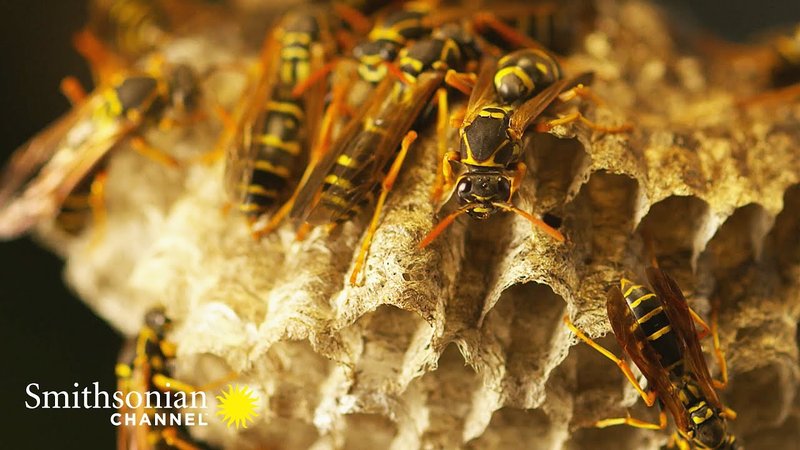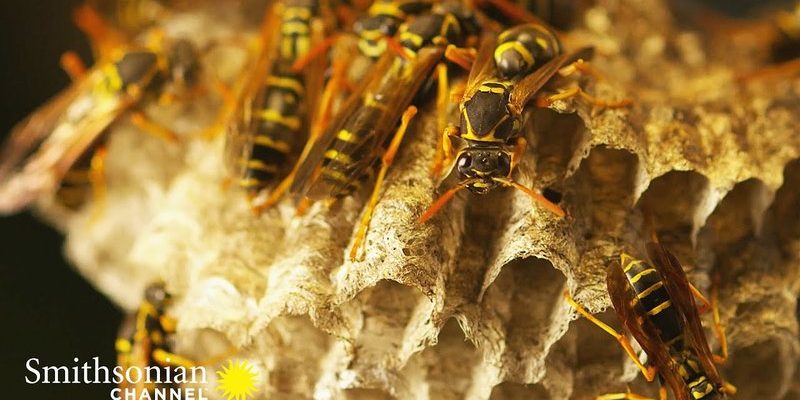
So, let’s explore the different habitats where wasps live and how they’ve evolved to handle their surroundings. It’s like diving into a miniature world full of clever adaptations and survival strategies. Grab your favorite drink and let’s chat about where these little buzzers call home!
Wasp Habitats: From Urban Areas to Wild Nature
Wasps can be found in a variety of habitats, ranging from bustling cities to remote forests. They’re quite adaptable, which gives them a leg up in many environments. In urban areas, you might spot them in gardens, parks, and even nesting on the eaves of buildings. These spots provide easy access to food sources, like nectar from flowers or pests they prey on.
In contrast, many wasps prefer more secluded locales. You can find them in wooded areas, fields, and even deserts. For example, paper wasps often build their nests in tree branches, taking advantage of the shelter that foliage provides. Such environments not only protect them from predators but also offer plenty of food. Wasps really thrive when there’s a mix of suitable shelter and a reliable food source.
You might be wondering how wasps make these habitats work. Well, they’re resourceful! They can utilize materials around them to create nests. For example, some wasps make nests with a unique paper-like substance created from chewed wood fibers and saliva. This adaptability is key to their survival, allowing them to build homes almost anywhere they settle.
How Wasps Build Their Nests
Building a nest is a laborious task for wasps, but it’s fascinating to see their methods. Social wasps, like yellow jackets and paper wasps, usually work together to create a communal nest. It starts small, often just a couple of cells, but it can grow into a large structure housing hundreds of wasps.
The process begins with a queen wasp who emerges in spring. After coming out of hibernation, she searches for materials like dead wood or plant fibers. She chews these materials and mixes them with her saliva, creating a pulp that hardens to form the nest. It’s like making paper mache! Once she has a solid foundation, she lays eggs in the nest cells, and worker wasps take over from there, expanding and maintaining the nest.
Interestingly, wasps are skilled at choosing their locations. They prefer sheltered spots to protect against rain and wind. For instance, you might find their nests under eaves, in shrubs, or even inside wall cavities. This strategic thinking allows them to thrive despite the challenges posed by their environment.
Adaptations to Climate and Weather
Wasps are well-equipped to handle different climates and weather conditions. In colder regions, many wasps undergo a process called *diapause*, similar to hibernation. The queen will spend the winter in a sheltered spot, waiting for the weather to warm up. When spring arrives, she emerges to start her new colony. This adaptation is crucial; it ensures that they survive through harsh winters when food is scarce.
In hotter climates, their nests are often built to reflect or dissipate heat. Certain wasps use their wings to create air circulation around the nest, helping to cool it down. This behavior is fascinating because it shows how they adapt their living conditions to suit the local climate, ensuring the health of their colony.
Another interesting point is how wasps have developed physical adaptations like a thick exoskeleton to fend off the elements. This tough exterior helps protect them from rain and excess humidity, allowing them to thrive even in less-than-ideal conditions. It’s a perfect example of nature’s ingenuity in using every possible advantage for survival.
The Role of Food in Wasp Adaptation
Food availability plays a vital role in where wasps live and how they adapt. Wasps are generally omnivorous, which means they eat a variety of foods. They’re known as excellent pest controllers, preying on insects like caterpillars and aphids. This diet not only helps them thrive but also benefits local ecosystems by managing pest populations.
During the flowers’ blooming season, wasps can be seen flitting around gardens, collecting nectar. This behavior is essential, especially in the early summer when they’re building and expanding their nests. The floral diversity present in their habitats helps them gather the nutrition they need to support their rapidly growing colonies.
You might be surprised to learn that different wasp species have specialized diets. Some cater to particular food preferences, such as sweet substances or meaty bits. This adaptation allows them to carve out niches in competitive environments, ensuring they have access to the resources they need. It’s a clever way to navigate the challenges of finding food in varying conditions.
Interacting With Humans: Urban Adaptations
As urbanization increases around the world, wasps are finding new ways to coexist with humans. Surprisingly, they can thrive in city environments where food sources are plentiful. This adaptability can be both good and bad. For instance, while they help control pest populations in gardens, their presence can also lead to unwelcome encounters at outdoor gatherings.
To adapt, wasps have learned to exploit human activities. They scavenge leftovers from picnics and trash bins, which is often easier than hunting for food. This behavior allows them to take advantage of resources in urban settings, making them more successful at establishing nests near human habitation.
Interestingly, not all wasps become a nuisance. Many species are beneficial pollinators that contribute to healthy ecosystems. They seldom sting unless provoked, and understanding their role can help humans appreciate them more. Educating ourselves about wasps might just bring a little harmony between humans and these hardworking insects.
Wasps are remarkable creatures that display a special resilience in diverse habitats. From urban jungles to quiet forests, they’ve adapted their living arrangements, nesting strategies, and feeding habits to thrive in various environments. Their ability to survive and flourish in changing conditions is a testament to nature’s adaptability.
As we continue to coexist with these fascinating insects, it’s important to understand their role in the ecosystem and how they contribute to maintaining a balance in nature. Rather than viewing wasps solely as nuisances, let’s appreciate their complex lives and the amazing ways they adapt to the world around us. The next time you see a wasp buzzing by, remember that it’s not just an annoyance; it’s a resilient creature playing its part in our environment.

